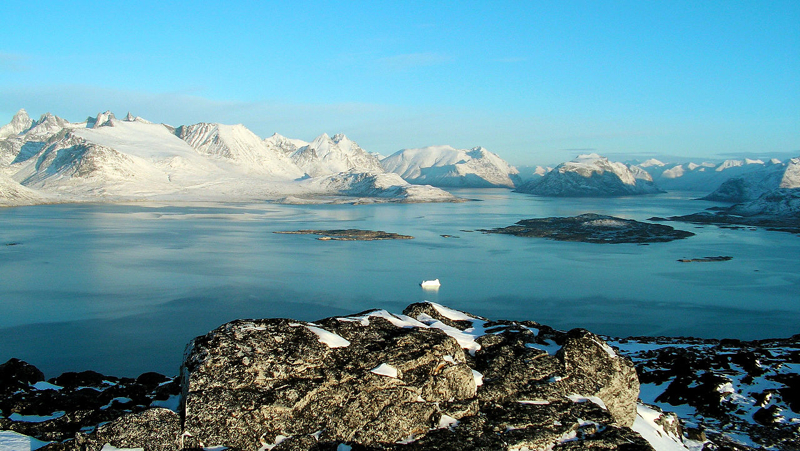How Greenland will prop up the world economy


By land mass Greenland is one of the largest countries in the world. Yet only 57,695 people live there, roughly the population of Dearborn Heights, a town in Michigan. And its historically massive ice sheet is melting.
That all adds up to one thing: easier access to vast reserves of minerals for the rest of the world.
The country and its 2.2 million square kilometers is full of subterranean riches, including rare earth metals that are crucial to products ranging from missiles to cars to smartphones and computers, and that many companies struggle to obtain. Today, China controls well over 90 percent of the international rare earth market, drawing a World Trade Organization probe prompted by U.S, European and Japanese complaints of unfair practices.
Companies outside China have been looking for ways around Beijing's control, and one place they are eyeing is Greenland, which has the world's second largest deposit of rare earths outside of China, according to the Epoch Times (Greenland has 9.16 percent of the global rare earth potential, the EU says).
RARE FINANCIAL POTENTIAL
Many people believe the chilly North Atlantic nation would gain enormous economic benefits by allowing more mining operations, just as it stands to profit from its expanding hydrocarbon explorations. Its economy is currently overly dependent on exporting fish and shrimp.
But as Jorgen T. Hammeken-Holm of Greenland's Bureau of Mineral and Petroleum notes in the Epoch Times story, the country's rare earths occur with uranium, "and with our current zero-tolerance policy (against uranium mining), it means that this deposit cannot be exploited."
That could change this year.
"The Greenlandic Parliament is divided on the issue," the paper reports. "Legislation relating to the country's mining industry will likely figure largely in 2013's parliamentary elections."
It feels like the country is swinging to more permissive mining.
"All are welcome if they meet our conditions and our requirements to operate in Greenland," Prime Minister Kuupik Kleist said in a BBC story last week.
NUCLEAR NOURISHMENT
More openness could also free up uranium for supply to the world's nuclear reactors, helping to feed the nuclear resurgence that has been slowly building as countries including China and Russia step up their nuclear plans, and as Japan's new prime minister puts nuclear back on the agenda. New nuclear will include alternative reactor designs, such as molten salt reactors that can operate at much higher temperatures and thus more efficiently than today's solid fuel reactors.
Likewise, a more actively mined Greenland could also yield an alternative nuclear fuel: thorium, the widespread element that trumps uranium's performance in many ways. Greenland has two percent of the world's thorium reserves, according to the World Nuclear Association (thorium exists all over the world, and no country has more than 16 percent of deposits, the WNA figures show).
Thorium commonly occurs in monazite, a mineral that is also rich in rare earth elements (I'm not sure whether Greenland's rare earths come from monazite or other rocks).
Greenland is one of several areas outside of China that holds promise as a supply of rare earths. As I noted last week, Japanese researchers believe they have found a healthy supply of the metals in Jamaica.
For those of you who are regular readers of this blog, yes, Greenland is the place I mentioned that is the "opposite" of Jamaica. No matter what the climate at the source - hot or cold - it certainly does seem that things are heating up on rare earth liberation front.
Photo of Ravnefjeldet (Raven Mountain) in the south of Greenland, by Jensbn via Wikimedia
More rare earth wanderings on SmartPlanet:
- Foreign suitors including China eye only U.S. rare earth operator
- Reggae, reefer and rare earths: Welcome to Jamaica!
- China snubs Western complaints, restricts rare earth exports again
- Need rare earths? Try the Idaho-Montana border
- Toyota affiliate buys half a Canadian rare earth deposit
- Japanese manufacturers to China: We don’t need your rare earths
- Your next refrigerator could be a magnet
- Solve the energy AND rare earth crisis: Join the thorium bank
- China cuts off rare earths. World War ensues. It’s Call of Duty, the video game.
- The two-timing white knight of U.S. rare earth metals
- Philips developing rare earth substitute for LEDs, says CEO
- Why safe nuclear will rely on rare earth mineral
Greenland and other northerly climes:
This post was originally published on Smartplanet.com